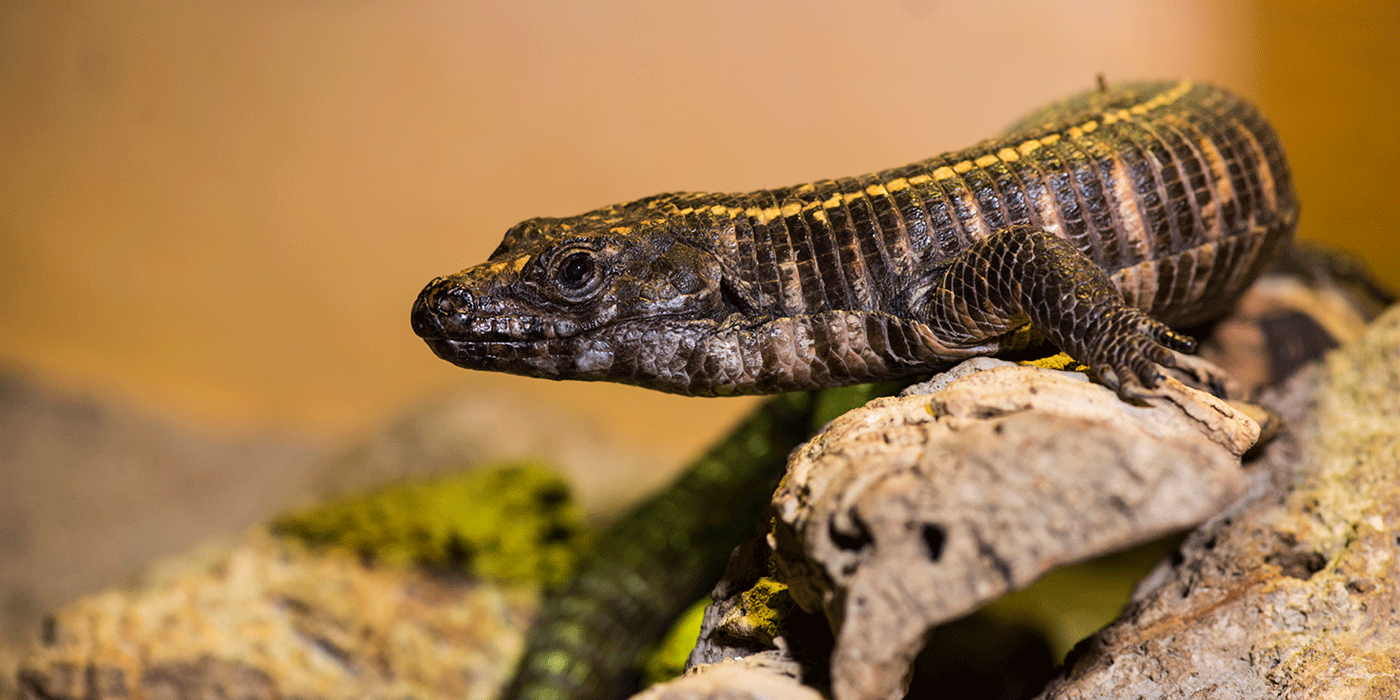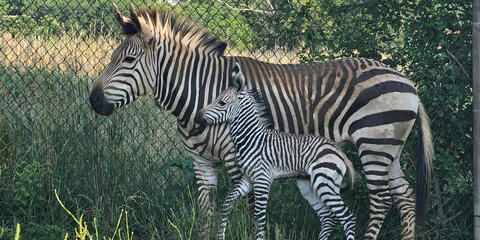There are 30 species of plated lizards, and the African plated lizard (also called the giant plated lizard) is one of the largest. It has a squat body, plate-like scales and powerful legs.
Physical Description
There are 30 species of plated lizards, and African plated lizards (also called giant plated lizards) are one of the largest. They have thick bodies and powerful legs, which aid in both speed and digging. They have black, rubber-like balls on the soles of their feet.
Adult African plated lizards have black or brown scales on their backs, called dorsal scales. Each dorsal scale is spotted with yellow. The plates on their heads, called head shields, are also yellow. Their throats are an off-white color, and their bellies are light brown. Juveniles are black with yellow spots on their backs and yellow stripes on the sides of their bodies.
African plated lizards' dorsal scales are small with many ridges, with give them a serrated appearance. Their lower eyelids are also covered with small scales. They have large, triangular scales on their cheeks, called tympanic shields. Their abdomens are lined with rows of plates, which are specialized bones in the skin that provide support for the scales.
There are two subspecies of African plated lizards, Gerrhosauraus validus validus and Gerrhosaurus validus maltzahni. The subspecies G. v. maltzahni has 12-14 rows of plates on its abdomen, called ventral plates. Small scales, called suboculars, also border its upper lip. The subspecies G. v. validus, which is found in the eastern part of the African plated lizard's range, has 14-16 ventral plates and no suboculars on its top lip.
Plated lizards have a groove, called the “relief groove,” that runs laterally along the length of the body. The relief groove contains skin with no scales. Itallows for expansion, which helps plated lizards hide from predators. When threatened, they will run into a rocky hill and hide inside the crack of a rock. They then fill their lungs with air to wedge themselves in place.
Size
Native Habitat
African plated lizards are found in the northern stretch of the African subcontinent. The subspecies G. v. validus is seen in the eastern parts of this range, specifically in South Africa, Zimbabwe, Mozambique, and Malawi. The subspecies G. v. maltzahni is found in central and southwest Namibia and in southern regions of Angola.
They live in mesic to arid habitats in the African savanna. They prefer the upper slopes of granite koppies (small hills that protrude from otherwise flat landscapes), and can often be found in the cracks of large rocks.
Lifespan
Food/Eating Habits
African plated lizards are omnivores. They forage in an expansive area, feeding on invertebrates, as well as soft vegetable matter, such as flowers, fruits, figs and leaves. These lizards will also eat other small lizards and baby tortoises.
At the Smithsonian's National Zoo, they eat salad and crickets.
Social Structure
Reproduction and Development
In midsummer, females usually lay two to five eggs in the soil-filled cracks of rock ledges. Their eggs are large and oval with leathery shells. The hatchlings emerge about 11 weeks later and are 15-17 centimeters (5.9-6.7 inches) long.
During the breeding season, a male African plated lizard's chin, throat and sides of the head develop a pink-purple tinge.
Conservation Efforts
Help this Species
- Share the story of this animal with others. Simply raising awareness about this species can contribute to its overall protection.




